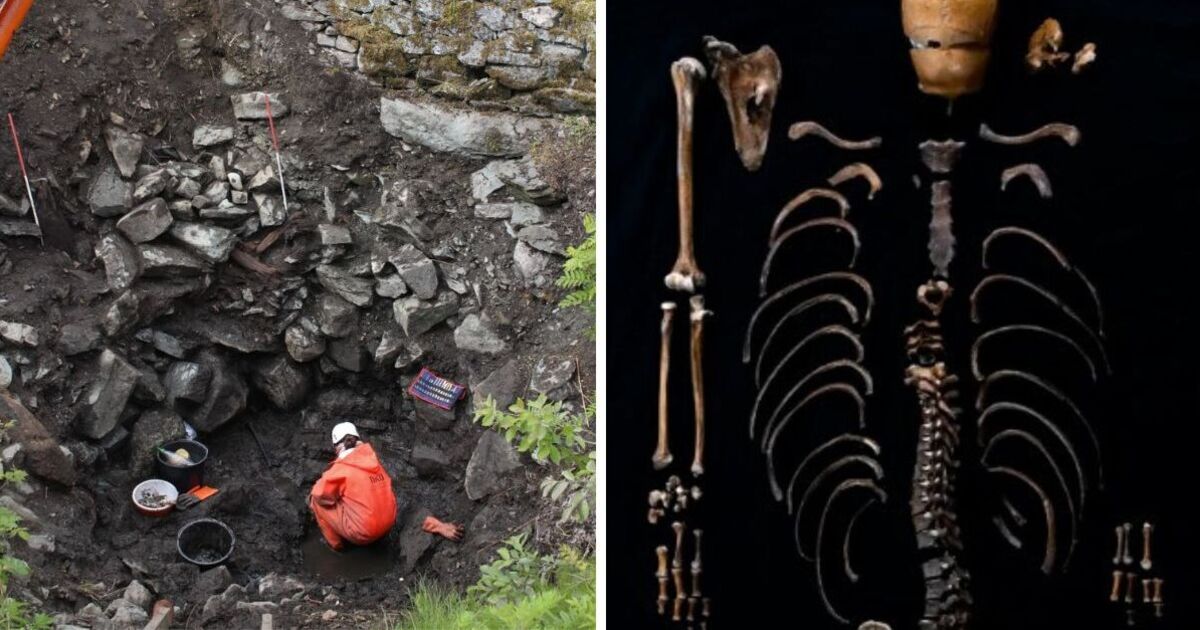The identity of skeletal remains discovered in a well at Norway’s Sverresborg castle has been linked to an ancient Norse text, according to researchers.
The 800-year-old Sverris saga, which chronicles the life of King Sverre Sigurdsson, mentions the body of a deceased man, later dubbed “Well-man”, being thrown into a well during a military raid in central Norway in 1197.
The text suggests that the body was likely tossed into the well to contaminate the local water supply, but it provides little information about the man’s identity.
The bones were first found in the castle’s well in 1938, but only a visual analysis was possible at the time. Today, scientists have a range of analytical tools at their disposal, including genetic sequencing and radiocarbon dating.
A recent study published in the Cell Press journal iScience offers unprecedented insights into Well-man’s appearance based on extensive research on samples of his teeth.
“This is the first time that a person described in these historical texts has actually been found,” said study co-author Michael D. Martin, a professor in the department of natural history at the Norwegian University of Science and Technology’s University Museum in Trondheim.
He added: “There are a lot of these medieval and ancient remains all around Europe, and they’re increasingly being studied using genomic methods.”
The latest research not only unveils the true appearance of Well-man but also unravels his identity, adding an unexpected twist linking him to a Norse saga.
“The Sverris saga” offers a glimpse into the meteoric ascent of King Sverre, who ruled Norway in the latter half of the 12th century, from 1152 to 1202.
The saga reveals insights into Norway’s formative years, marked by political turmoil and warfare sparked by succession disputes following King Sigurd Munn’s death, as per the study.
Sverre entered the fold claiming to be Munn’s offspring after Munn was slain by his sibling in 1155, igniting the battle for the crown.
Decades later, evidence of this surfaced; parts of a man’s skeleton emerged beneath hefty rocks within the destroyed well during the 1938 excavation.
Further discoveries in 2014 and 2016 excavations revealed additional pieces of the puzzle along the well’s southern edge, including a severed left hand and fragments of his skull disconnected from the rest of his body.
Intriguing research linked to these findings pointed to the bones being those of a man aged between 30 and 40 years at death.
The evidence suggests that he sustained significant trauma before death, with a blunt force impact to the back of his head and two deep cuts in his skull, as noted by research authors.








